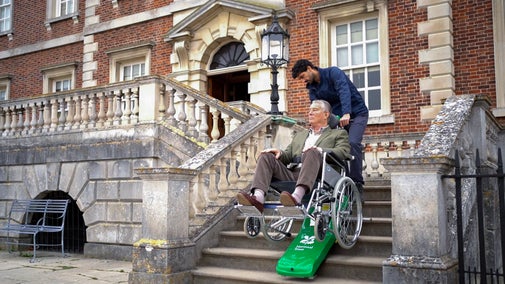Joan joins the herd at Wimpole Estate's Home Farm

The team at the National Trust's Wimpole Estate are delighted to welcome a new addition to the heavy horse herd at Home Farm, a four-year-old Suffolk mare named Walton Pride Joan.
A Historic New Arrival
Joan, who arrived at Wimpole on 22 May, represents an exciting new chapter for the estate’s rare breed conservation work. While Wimpole has proudly maintained a tradition of working Shire horses for the past 25 years, the arrival of Joan marks the welcome return of Suffolk Punch horses to the estate, a breed historically used alongside Shires in Wimpole’s working past.
Suffolk horses, also known as the Suffolk Punch, are Britain’s oldest native heavy horse breed and are currently listed as critically endangered, with fewer than 500 remaining in the UK. Recognisable by their powerful build and distinctive chesnut colouring (always spelt without the "t"), these gentle giants were once a common sight in agricultural work, especially in East Anglia.
Joan’s Background and Future Role
Acquired from a private owner in Wisbech, Joan has already earned accolades in the show ring, including the title of “Best Suffolk in Show” at the Suffolk Horse Society Annual Show. Calm, well-mannered, and friendly, Joan has quickly settled into her new life at Wimpole Estate and struck up a fast friendship with resident Shire horse, Lady.
“We are so incredibly pleased to welcome Joan to Wimpole Home Farm,” said Emma Warner, Farm Manager. “It is wonderful to see the return of Suffolks to Wimpole after such a long time. The team are already enjoying getting to know her and are very excited about her future with us.”
As part of Wimpole’s ongoing work as a rare breeds centre, the team hope Joan will not only take on practical tasks around the farm, including harrowing fields and possibly timber extraction but also contribute to the future of her breed through considered breeding opportunities.
Visit Joan and Learn More
Visitors to Home Farm can find Joan in her stable or out in the fields. They will also have the opportunity to learn about the important role that these magnificent horses play in sustainable land management and the preservation of rare native breeds.
Built in 1794, Home Farm is the only in-hand farm of its kind in the National Trust. Unique to Wimpole Estate, it is a model for sustainable farming practices. As one of the UK’s largest rare-breed centres, the National Trust plays a key role in conserving rare and traditional breeds of livestock, including Irish Moiled and Shetland cattle, Oxford Sandy and Black pigs, Bagot goats, and rare breeds of sheep.
You might also be interested in
Explore Wimpole Home Farm
Built in 1794, Home Farm is the only in-hand farm of its kind in the National Trust. Unique to Wimpole Estate, it is a model for sustainable farming practices. A must see on your next visit, it is home to many rare-breed animals and the species of flora and fauna that make the estate an agricultural champion.
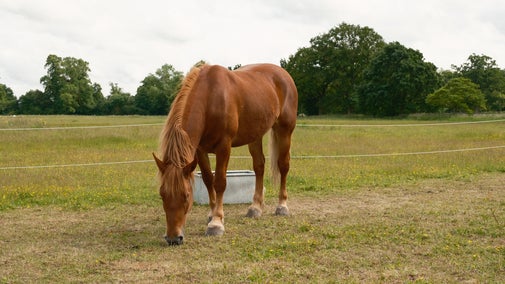
The history of Wimpole Estate
From Iron Age roundhouses to a modern estate, Wimpole has been lived on and farmed for over 2,000 years. Discover how its owners have each left their mark.

Family-friendly things to do at Wimpole
From events and activities to getting close to animals, here's what you need to know about a family day out at Wimpole.

Our work at Wimpole Estate
Take a look at some of the important work that takes place at Wimpole Estate on a day-to-day basis, to look after this special place for everyone, for ever.
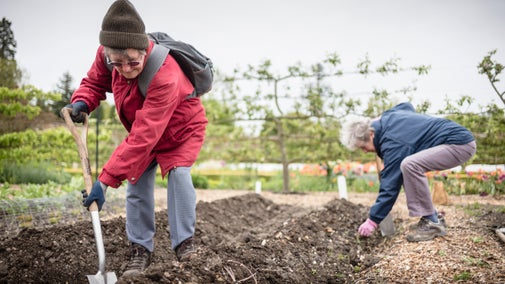
Volunteering at Wimpole Estate
Discover the opportunities available for volunteering at Wimpole Estate and what you could get out of it.
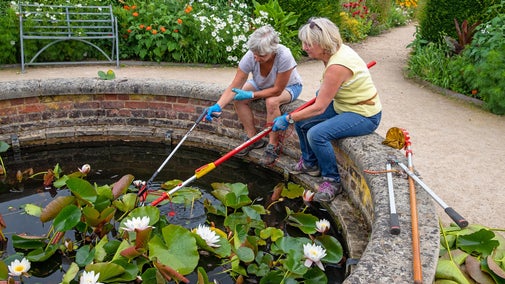
Visiting Wimpole Estate with your dog
Wimpole Estate is a two pawprint rated place. Find out where you can and can't go with your pooch and the facilities available for dog owners on the estate.
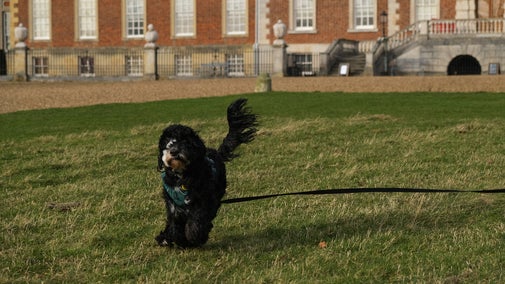
Accessibility at Wimpole Estate
We want to ensure that Wimpole Estate is accessible to all visitors. While this historic estate presents some unique access challenges, we’re committed to making it as inclusive as possible so everyone can enjoy Wimpole’s history and natural beauty. Here, you’ll find essential information about access across the estate to help you make the most of your visit.
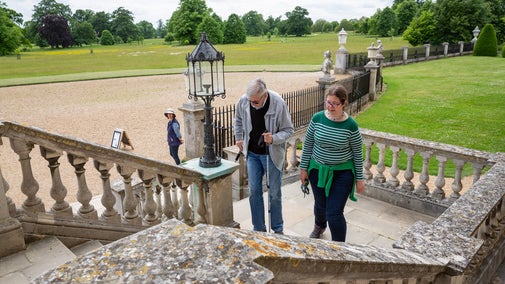
Stair Climber enables hundreds of visitors to access Wimpole Hall for the first time
The National Trust has enhanced accessibility at Wimpole Hall in Cambridgeshire by installing a Stair Climber, enabling wheelchair users and those with limited mobility to access the historic building. Following a successful trial in 2024, 788 visitors who might have otherwise missed out were able to experience the site. The Stair Climber offers a non-invasive solution that preserves the hall’s historic fabric while making it more inclusive. Similar installations have been introduced at other National Trust properties across the country, reinforcing the organization’s commitment to improving accessibility for all visitors.
